The best part of my job is also the worst part of my job.
I guess that Dickensian declaration requires an explanation.
The best part of my job is that I get to try lots of new irons. Words can’t adequately express the joy of long brown boxes showing up on my doorstep. On the other hand, the worst part of my job is that I have to try lots of new irons. Just when I reach that sweet spot of understanding with an iron set, I have to start all over again with something else.
I know, poor me, right?
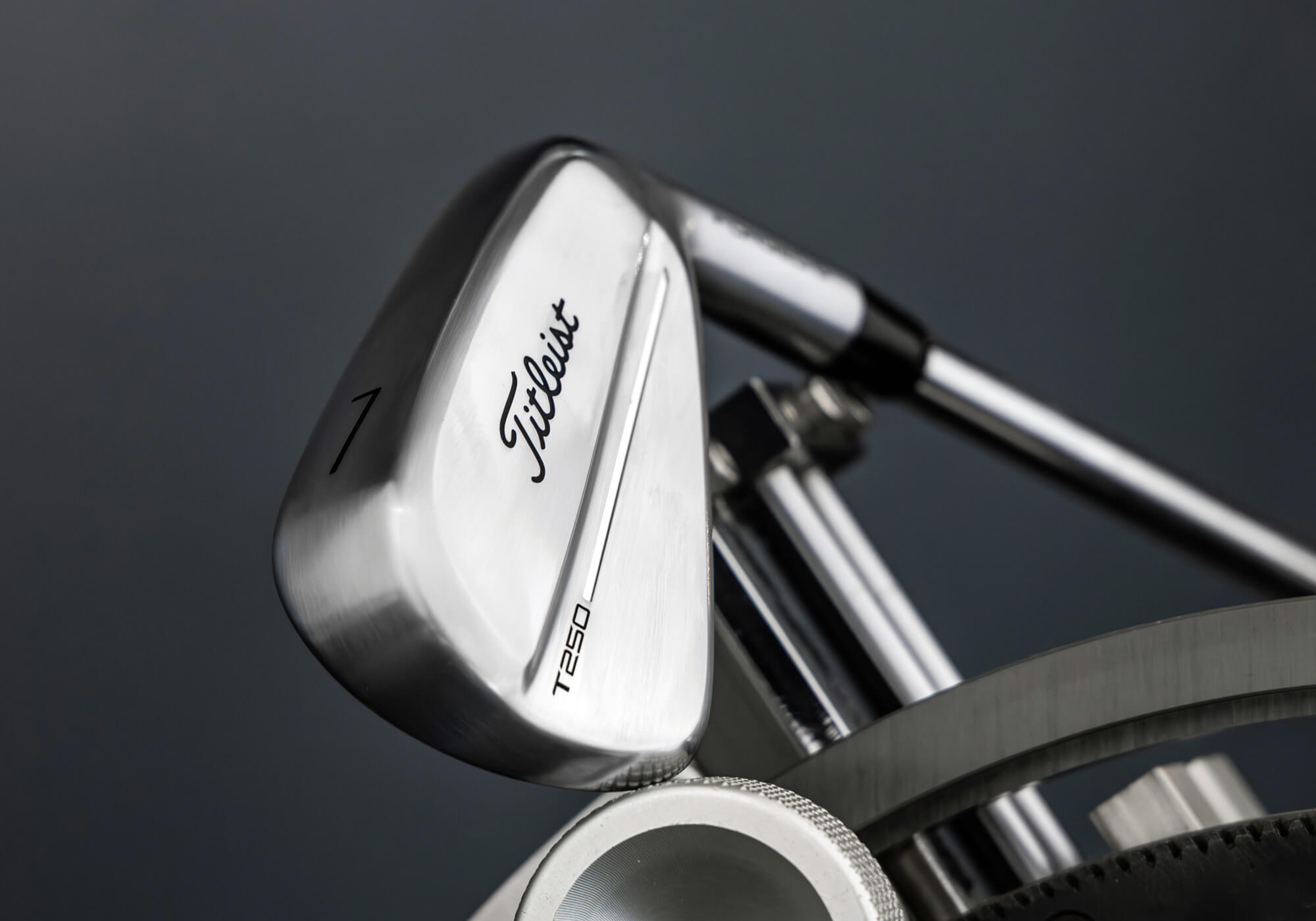
Therefore, it is with mixed emotions that I must report your loyal scribe has been tasked with taking a deep dive into the new Titleist T250 irons. It’s a dirty job, but it’s one I’m willing to take on for you, dear reader. I’m just that kind of guy.
You’re welcome.
When the Titleist T250 irons were launched over the summer, MyGolfSpy wondered if they were, in fact, the player’s distance iron we’ve been waiting for. After three rounds, several launch monitor sessions and as much practice as I could squeeze in between two jobs, I can say one thing for certain.
I think, maybe, yes. They just might be.
At the very least, they’re in the conversation. Considering what the T250 is replacing, that’s a huge win for Titleist.
How’s that for bold?
What makes the Titleist T250 “the one we’ve been waiting for”?
For a company fighting the “for better players only” label, the Titleist T250 irons sure do carry a “for better players only” look. The topline is thin (for the category) and the blade length and shape are startlingly compact. The T250 would look at home in any low single-digit handicapper’s bag, and it’s still forgiving enough for those in the high teens.
That said, the Titleist T250 is, with a 30.5-degree 7-iron, a player’s distance club.
“Modern iron design drives players into stronger lofts,” Titleist Director of Iron Development Marni Ines tells MyGolfSpy. “But just hitting it farther isn’t about accuracy, precision or descent angle. The ethos of our design philosophy is to give players better consistency of distance, dispersion and descent angle.”
Therein lies the rub with player’s distance irons. For a category that didn’t really exist a decade ago, it’s now second in overall sales industry-wide. Older golfers who still have game or emerging golfers working on their game love player’s distance. They look like a player’s iron but they pack a bit more punch. They’re also more forgiving than blades or player’s cavity-backs, but without the garden tool look of game improvement irons.

There’s plenty of distance technology in player’s distance irons. Unfortunately, it often comes at the expense of spin and/or descent angle. Unless you can get them up in the air, you’ll have trouble holding greens.
“Players that struggle with this usually have lower club head speeds,” Ines explains. “The basics of iron design doesn’t really change. We want more long-iron height and distance and we want more consistent spin from light rough and wet conditions with mid and short irons.”
Fly high and land soft
Finding a player’s distance iron that spins is like hunting for a unicorn. Spin like you’d get with blades or cavity-backs just isn’t part of the recipe. To hold greens, you’ll need descent angles in the 45-degree range.
“Descent angle is closely tied to both distance control and dispersion,” says Ines. “These are precision instruments. We want the ball to drop and stop, not roll through the back of the green.”
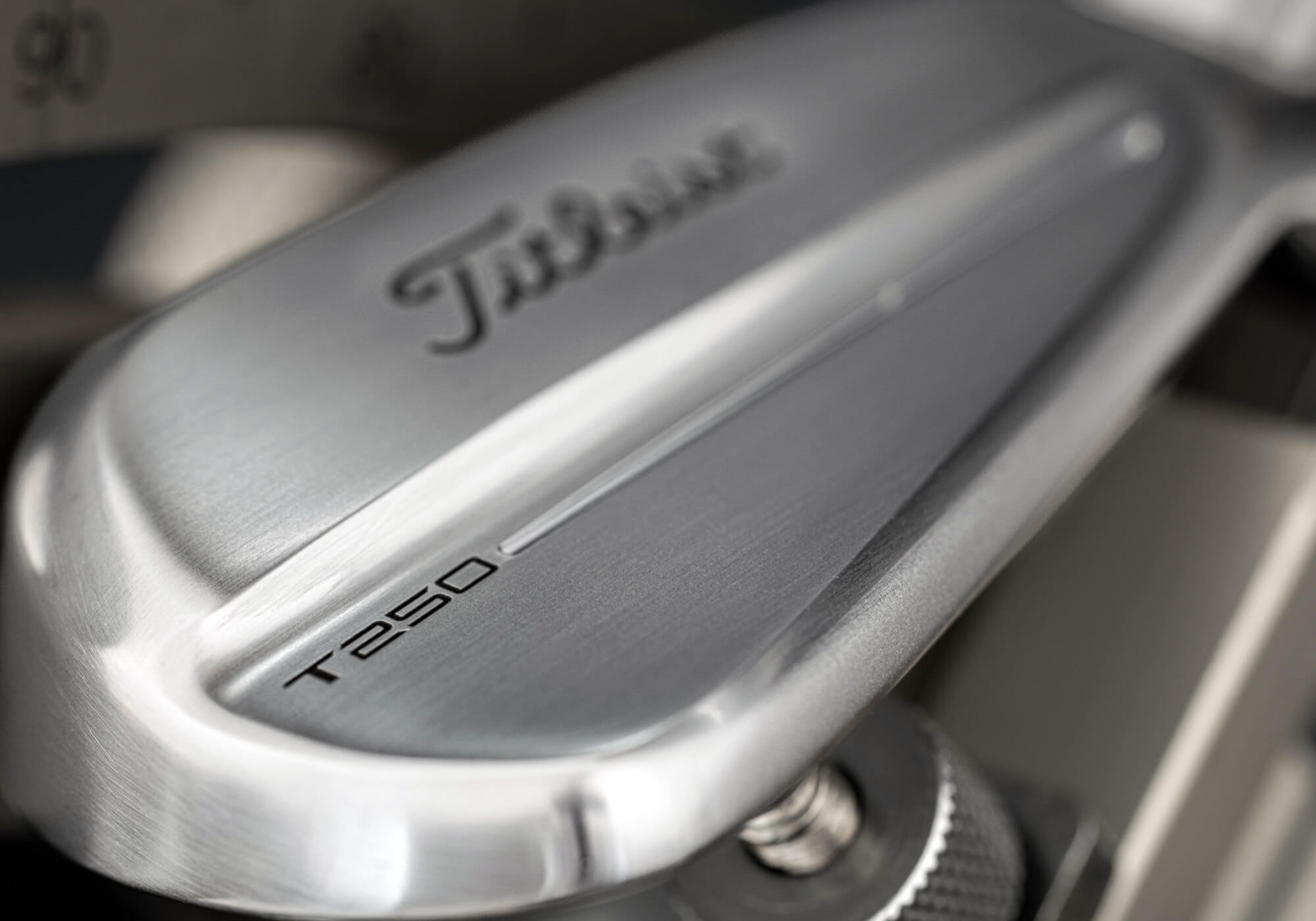
Titleist’s design philosophy is the same as its fitting philosophy: distance control, dispersion and descent angle. Titleist calls it the “three Ds” and the T250 irons might be the perfect storm where form, function and fit converge.
The new T250 is full metal construction (Titleist thankfully dumped the T200 plastic medallion), which opened some design options. First, the new SUP10 carbon steel forged L-face features an updated variable thickness profile, which Titleist calls V-Taper. The idea is to have more face material in the higher portions of the face to prevent flyers from light rough.
“In designs with face inserts, the higher spot on the face typically has a greater COR,” says Ines. “That’s a greater potential for ball speed. It also has more potential for spin to drop.”
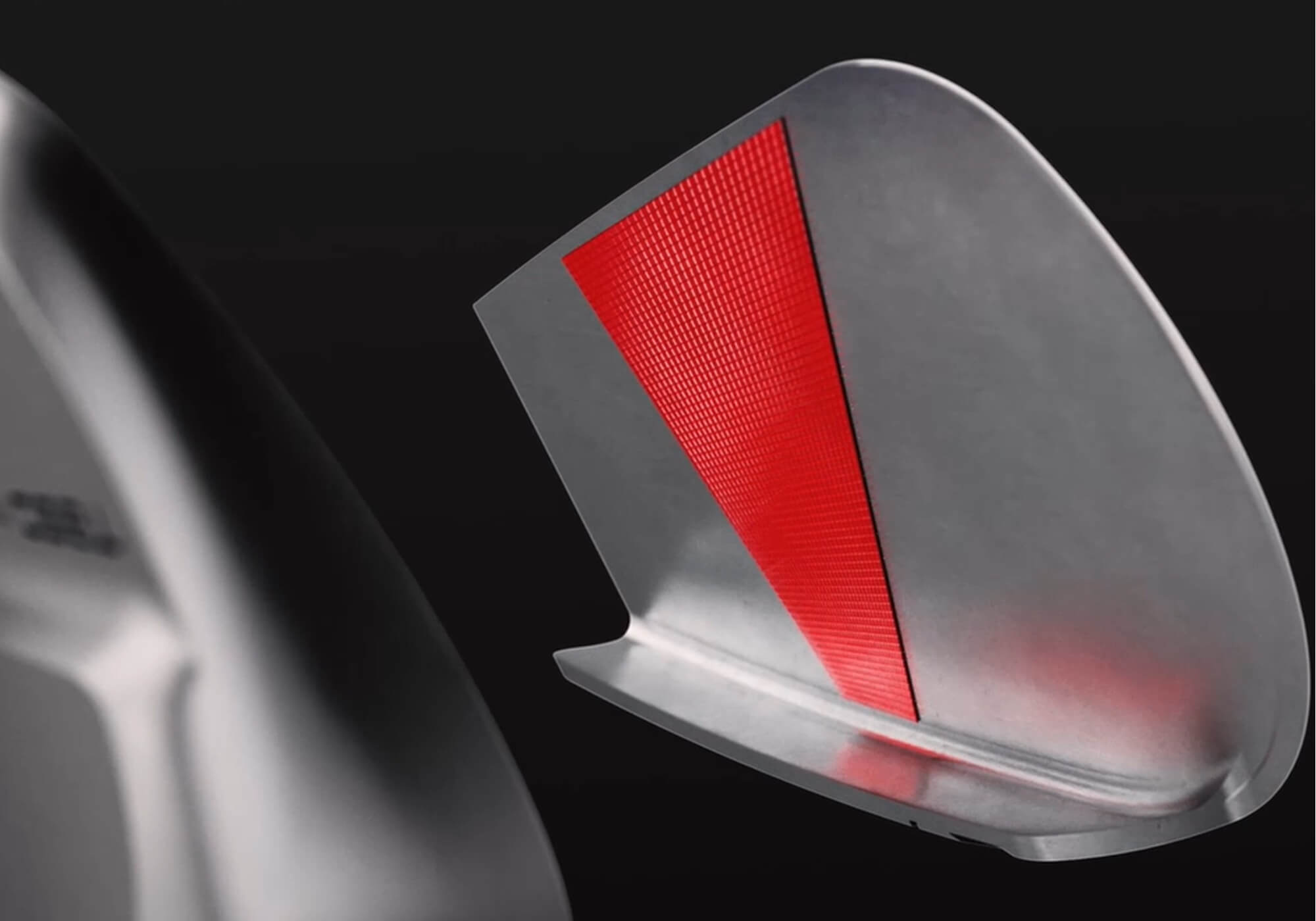
In essence, the V-Taper slows down the upper portion of the face. To limit spin loss from the rough and in wet conditions, when high face impact is more likely. Titleist has also redesigned the grooves in the T250 mid and short irons.
“We’ve steepened the sidewalls, which opens up the bottom of the groove a little bit,” says Ines. “That allows more debris and moisture to get to the bottom of the groove. That keeps the upper edge of the groove exposed to do its job.”
The Titleist T250 is still a rocket launcher
With all the talk of precision, control, descent angles and dispersion, it’s important to remember the Titleist T250 irons are also meant to go far. The V-Taper in the forged L-face provides additional thin area in both heel and toe which, when combined with Titleist’s updated Max Impact Technology, are ball-speed boosters.
Max Impact Technology consists of a thin polymer core right behind the face. While the V-Taper face design normalizes (i.e., slows down) ball speed high on the face, Max Impact Technology is designed to maximize ball speed on strikes lower on the face. In effect, it restores any ball speed lost due to the relative thickness of the face within the V-Taper.
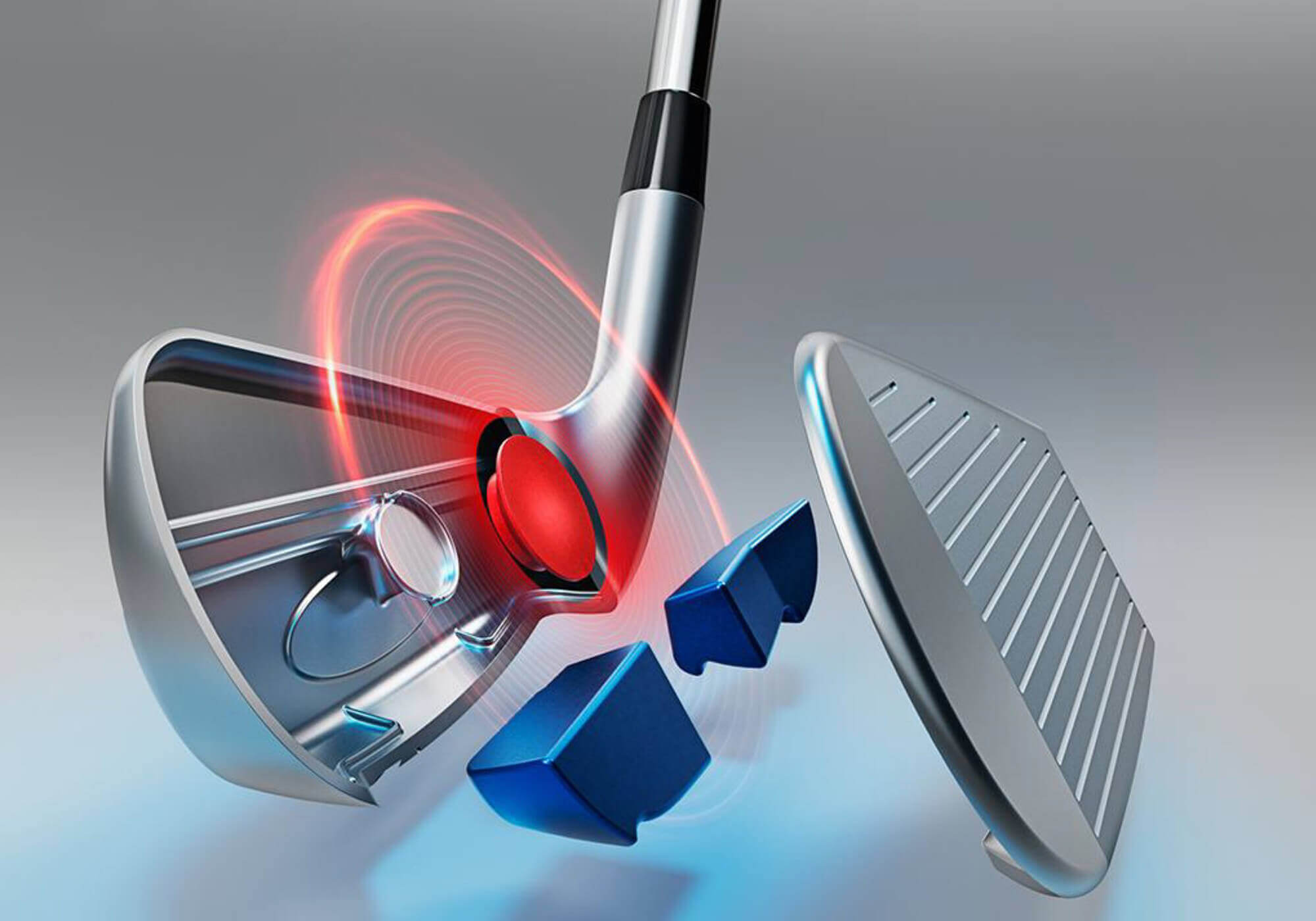
“We’re trying to make every spot on the face act more like that low-center strike,” explains Ines. “Between tungsten weighting, the V-Taper face design, new grooves and the center of gravity location, these are all levers we can push and pull to create and control distance.”
Titleist did go to town with high-density tungsten weighting in the heel and toe. The T250 irons feature a progressive center of gravity (lower in the long irons, higher as the irons get shorter) to make launch conditions more consistent. Additionally, the tungsten aids in clubhead stability and increases MOI.
“If the MOI is low and you don’t have this kind of weighting, the head will pitch open or shut with off-center impact,” explains Ines. “You won’t transfer as much energy into the face because the energy is going into the rotation of the clubhead.”
The result will be a shot that is likely offline left or right, not to mention short.

Indoors, outdoors and on the course
We golfers are funny people. Some irons you hit and know right away it’s not for you. Others are “love at first impact”, while others take a little time. For me, the Titleist T250 irons have been all three.
My fitting was outdoors and it was instant joy. The irons felt great and I loved the flight. The numbers were spot on, with consistent peak height and a mid-40s descent angle. When my irons arrived, our first date was indoors at Golftec. It didn’t go well.
Sound and feel were dull (thank you, indoor acoustics), peak height was lower and the descent angle was damn near concave. An outdoor practice session changed my mind about the sound and feel (both turned out to be forged-level sweet), but my first full round was a ball-striking debacle.
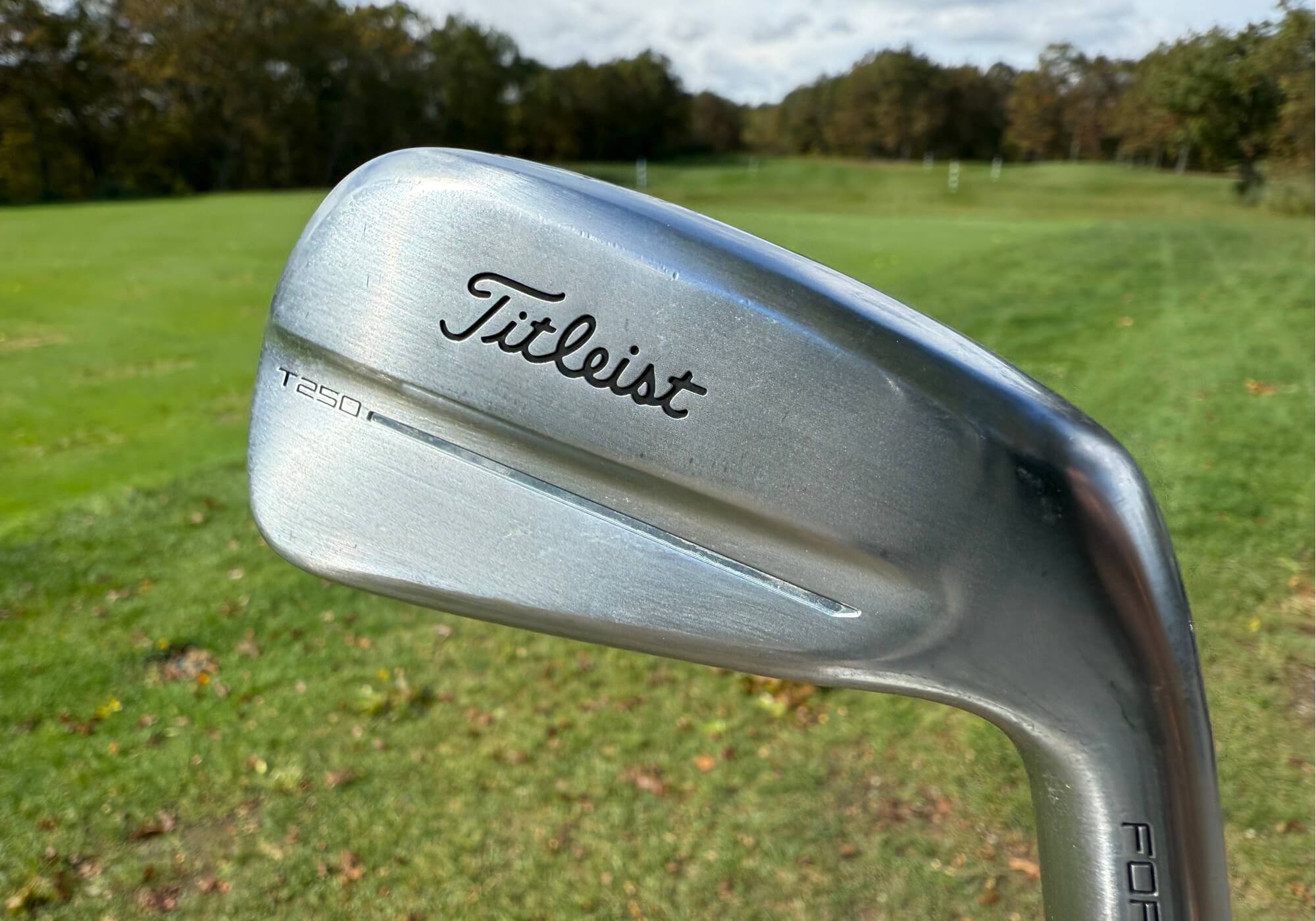
Under normal circumstances, we’d probably agree to stop seeing each other (It’s not you, it’s me). We both decided, for the sake of golf journalism, to keep at it until we got to understand one another. After several range sessions and two more full rounds, we managed to reach a certain level of trust and respect.
I think we can be happy together.
Over the course of those three rounds (and four or five range sessions), I did find something fascinating about the Titleist T250 irons. Whether it’s the compact size, the enhanced grooves or the tungsten-influenced stability, it was surprisingly easy to manipulate ball flight. I’m not going to go so far as to say I could “work” the ball (I’m not that good), but I found myself hitting the ball high or low on command, with baby draws, bigger draws and even the occasional fade for good measure.
That’s not something you tend to find in a player’s distance iron.

So, is the Titleist T250 the player’s distance iron we’ve been waiting for?
There are an awful lot of outstanding player’s distance irons out there. I spent much of the season playing the splendid Maxfli CG2 forged player’s distance sticks (I called this season “The Summer of Maxfli”) but I do recall looking to chuck them into a pond after my first round with them.
These things take time, usually about three rounds.
What I can say is that Titleist finally has an iron that can legitimately compete in the player’s distance category. As of this writing, nearly 50 percent of new T-series sales are the T250 and the T250 Launch Spec (weaker lofts across the board, lighter heads and shafts).

“We knew we were under-indexing in the player’s distance category,” says Titleist Product Marketing Director Tom Fisher. “Your dedicated golfer hangs out in the 18-handicap-on-down territory. The T250 is the arrow to go right into that segment.”
Ahh, the arrow, as in the “archer versus the arrow” argument. You can argue that one all you want but the fact is that club technology matters. We’re avid, dedicated golfers, not professional ones. Most of us aren’t likely to spend countless hours digging a better game out of the dirt. We’ll practice, take lessons and work at it, but it’s our hobby, not our living.
Equipment won’t make us better golfers but it can help us play better golf.
There is, my friends, a difference.
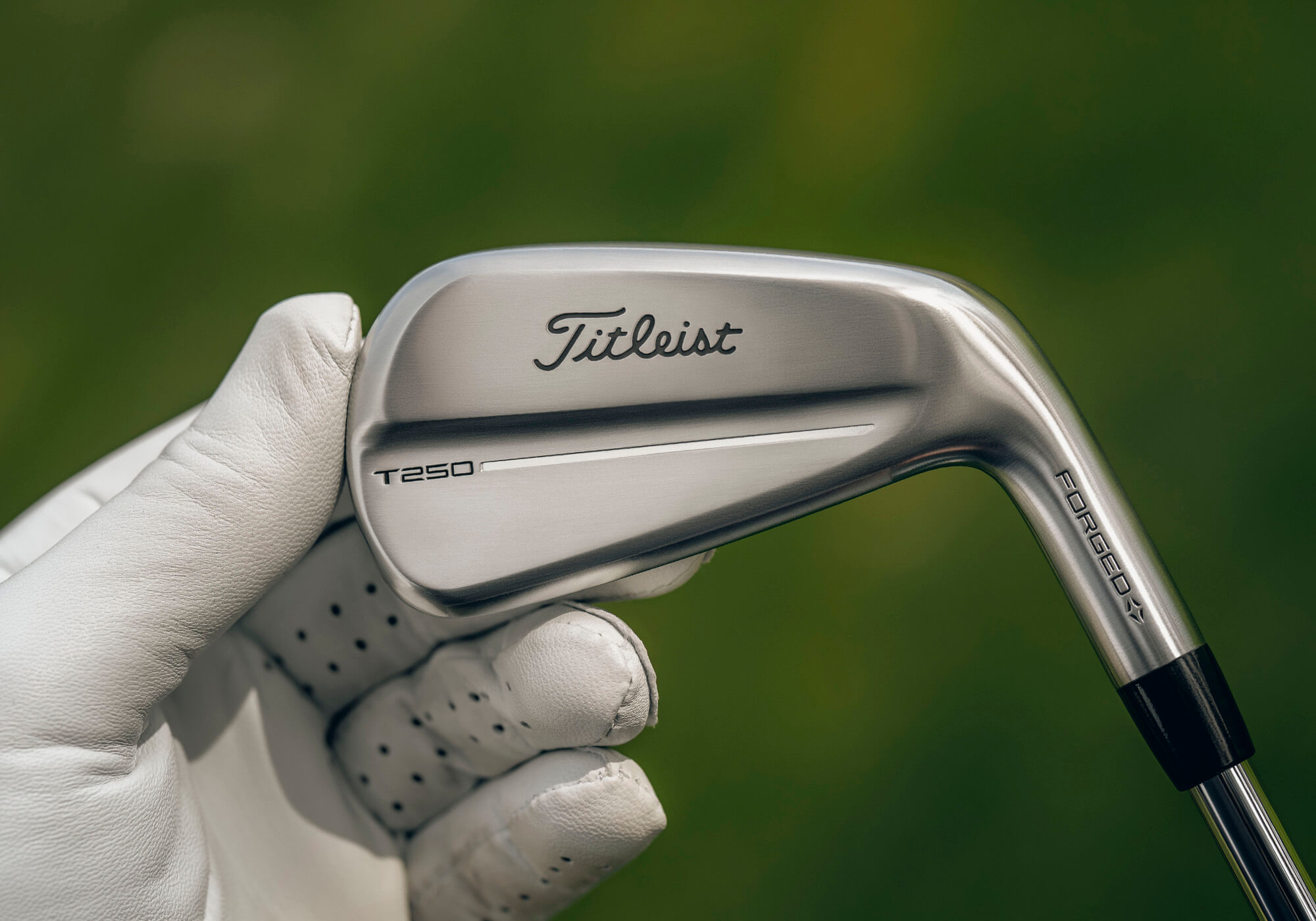
“It really boils down to aligning our design goals with our fitting philosophy: distance control, dispersion and descent angle,” explains Fisher. “That’s what we believe iron performance is all about, regardless of whether it’s achieved through fitting or through updating the technology and design of the irons themselves.”
The post Are The Titleist T250 Irons Really The Player’s Distance Irons We’ve Been Waiting For? appeared first on MyGolfSpy.
